#princess margaret rose windsor
Text
65 years apart
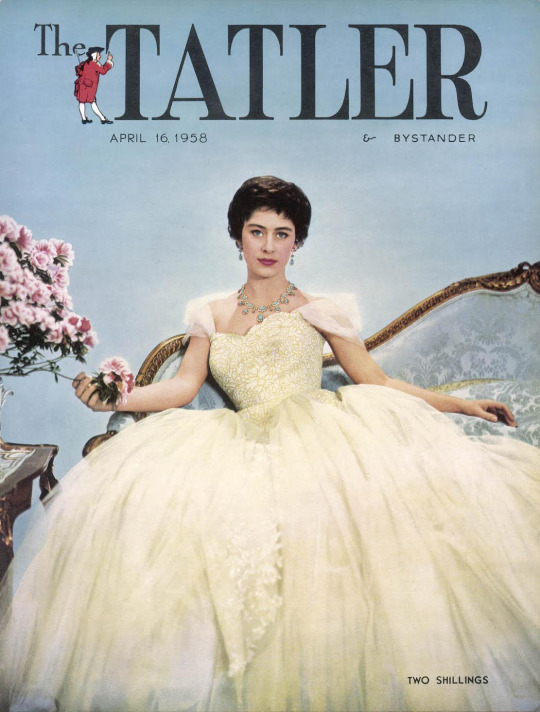
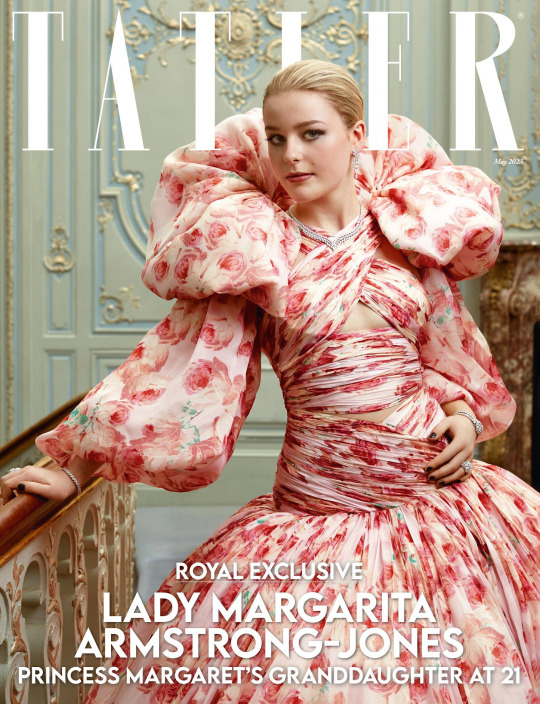
PatriciaTreble 65 years apart: Princess Margaret and her granddaughter on the cover of Tatler
*Post retweeted by @the-snowdons ❤️💖💖
#the crown#princess margaret#lady margarita armstrong-jones#british royall family#brf#the snowdons#cecil beaton#royal photographer#luc braquet#portrait photography#portrait#countess of snowdon#princess margaret rose windsor#princess margaret's granddaughter#lady margarita#margarita armstrong-jones#daughter of king charles first cousin#bridesmaid for the waleses#royal family#thecrownnet#tatler uk#magazine cover#1958#2023#margaret rose windsor#rose#lord snowdon#antony armstrong-jones
322 notes
·
View notes
Text

Princess Margaret of York, late 1940s.
#aesthetic#art#art history#fashion#historical fashion#historical art#women in art#women#princess margaret#british royals#british royal family#british royalty#house of windsor#countess of snowdon#Margaret rose#queen elizabeth ii#1940s#1940s fashion#1940s hairstyles#vintage#vintage photography#vintage style#royalty#royal aesthetic#1940
81 notes
·
View notes
Text
on this day in 1942
Girl Guides

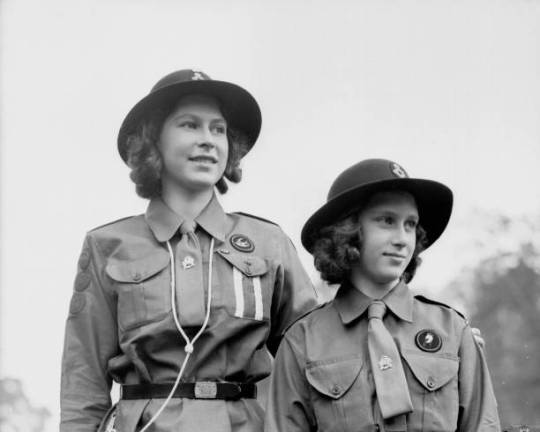

30th June 1942: Princesses Elizabeth and Margaret Rose wearing Girl Guide uniforms at Frogmore, Windsor, Berkshire.
79 notes
·
View notes
Text
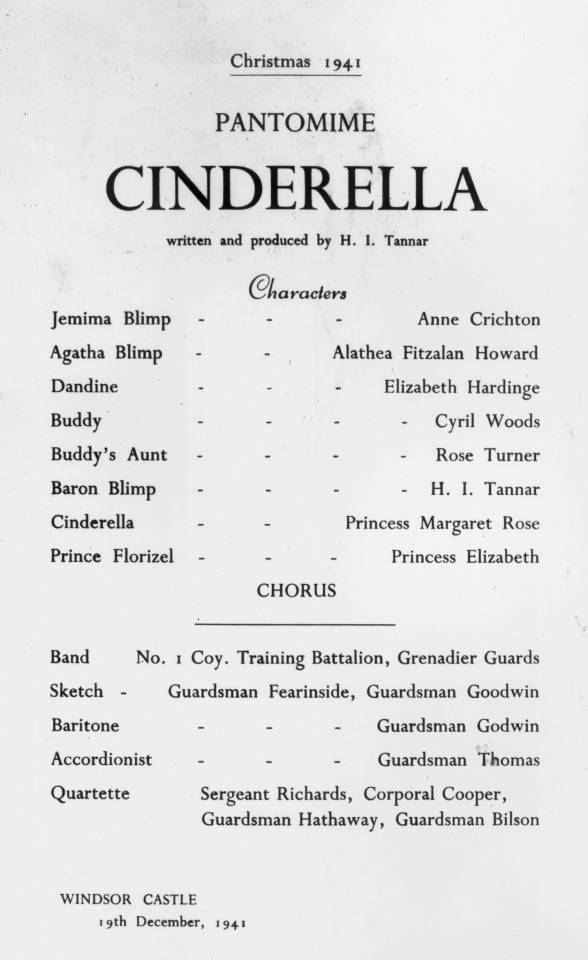
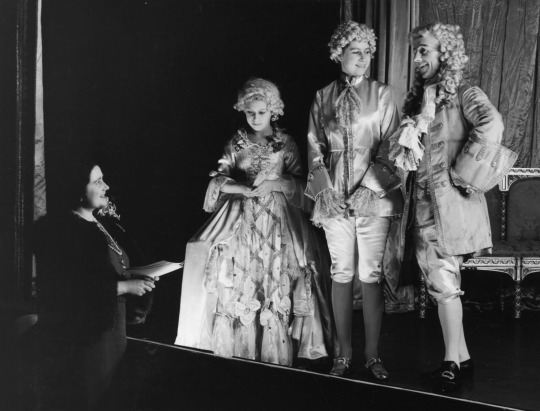

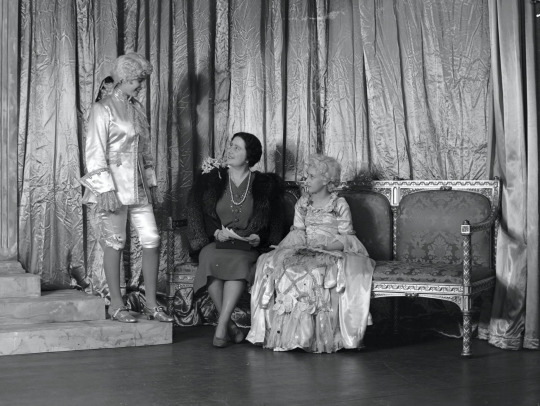














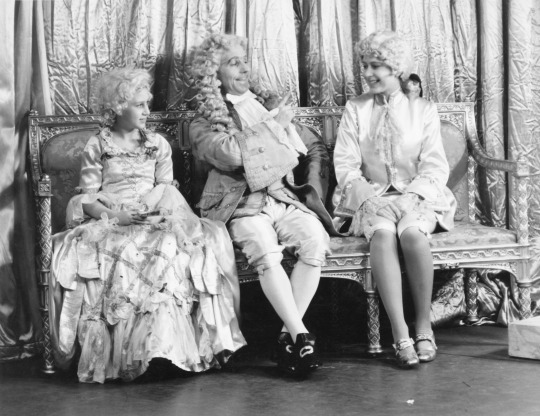
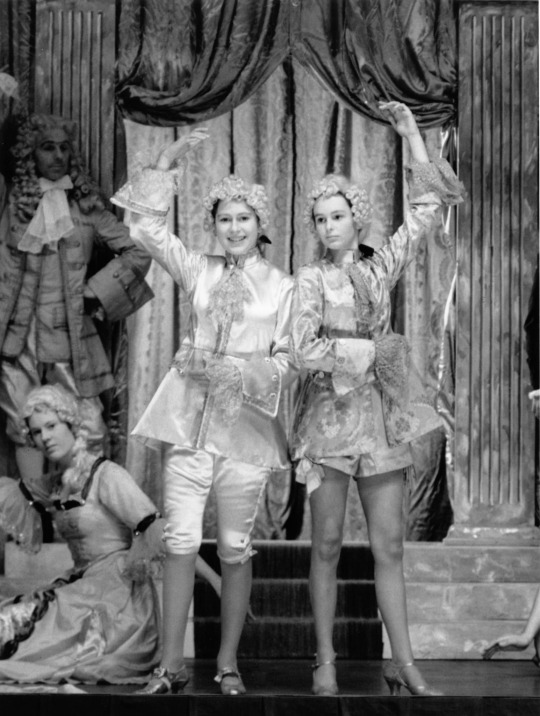

21 December 1941
The Royal production of the Christmas pantomime 'Cinderella' at Windsor Castle, starring Princess Elizabeth (later Queen Elizabeth II) and Princess Margaret Rose as Prince Florizel and Cinderella.
© Lisa Sheridan
147 notes
·
View notes
Photo
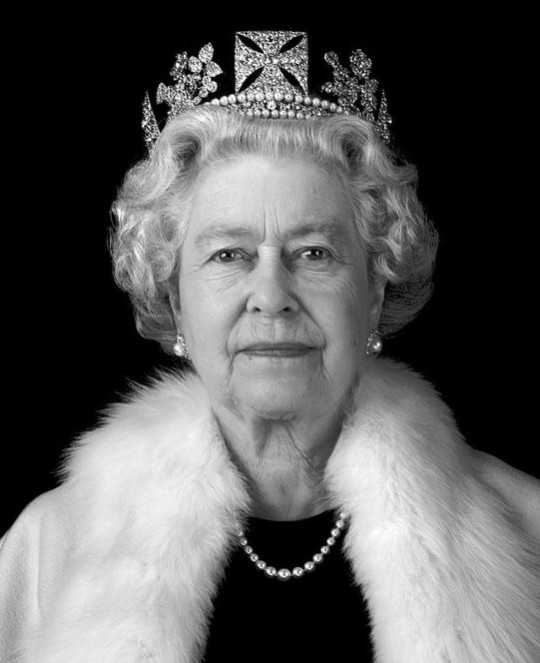
The long reign of Queen Elizabeth II was marked by her strong sense of duty and her determination to dedicate her life to her throne and to her people.
She became for many the one constant point in a rapidly changing world as British influence declined, society changed beyond recognition and the role of the monarchy itself came into question.
Her success in maintaining the monarchy through such turbulent times was even more remarkable given that, at the time of her birth, no-one could have foreseen that the throne would be her destiny.
Elizabeth Alexandra Mary Windsor was born on 21 April 1926, in a house just off Berkeley Square in London, the first child of Albert, Duke of York, second son of George V, and his duchess, the former Lady Elizabeth Bowes-Lyon.
Both Elizabeth and her sister, Margaret Rose, who was born in 1930, were educated at home and brought up in a loving family atmosphere. Elizabeth was extremely close to both her father and her grandfather, George V.
At the age of six, Elizabeth told her riding instructor that she wanted to become a "country lady with lots of horses and dogs".
She was said to have shown a remarkable sense of responsibility from a very early age. Winston Churchill, the future prime minister, was quoted as saying that she possessed "an air of authority that was astonishing in an infant".
Despite not attending school, Elizabeth proved adept at languages and made a detailed study of constitutional history.
A special Girl Guides company, the 1st Buckingham Palace, was formed so that she could socialise with girls of her own age.
Increasing tension
On the death of George V in 1936, his eldest son, known as David, became Edward VIII.
However, his choice of wife, the twice-divorced American Wallis Simpson, was deemed to be unacceptable on political and religious grounds. At the end of the year he abdicated.
A reluctant Duke of York became King George VI. His Coronation gave Elizabeth a foretaste of what lay in store for her and she later wrote that she had found the service "very, very wonderful".
Against a background of increasing tension in Europe, the new King, together with his wife, Queen Elizabeth, set out to restore public faith in the monarchy. Their example was not lost on their elder daughter.
In 1939, the 13-year-old princess accompanied the King and Queen to the Royal Naval College at Dartmouth.
Together with her sister Margaret, she was escorted by one of the cadets, her third cousin, Prince Philip of Greece.
Obstacles
It was not the first time they had met, but it was the first time she took an interest in him.
Prince Philip called on his royal relatives when on leave from the navy, and by 1944, when she was 18, Elizabeth was clearly in love with him. She kept his picture in her room and they exchanged letters.
The young princess briefly joined the Auxiliary Territorial Service (ATS) towards the end of the war, learning to drive and service a lorry. On VE Day, she joined the Royal Family at Buckingham Palace as thousands gathered in The Mall to celebrate the end of the war in Europe.
"We asked my parents if we could go out and see for ourselves," she later recalled. "I remember we were terrified of being recognised. I remember lines of unknown people linking arms and walking down Whitehall, all of us just swept along on a tide of happiness and relief."
After the war, her desire to marry Prince Philip faced a number of obstacles.
The King was reluctant to lose a daughter on whom he doted, and Philip had to overcome the prejudice of an establishment that could not accept his foreign ancestry.
But the wishes of the couple prevailed and on 20 November 1947 the couple married in Westminster Abbey.
The Duke of Edinburgh, as Philip had become, remained a serving naval officer. For a short time, a posting to Malta meant the young couple could enjoy a relatively normal life.
Their first child, Charles, was born in 1948, followed by a sister, Anne, who arrived in 1950.
But the King, having suffered considerable stress during the war years, was terminally ill with lung cancer, brought about by a lifetime of heavy smoking.
In January 1952, Elizabeth, then 25, set off with Philip for an overseas tour. The King, against medical advice, went to the airport to see the couple off. It was to be the last time Elizabeth would see her father.
Elizabeth heard of the death of the King while staying at a game lodge in Kenya and the new Queen immediately returned to London.
"In a way, I didn't have an apprenticeship," she later recalled. "My father died much too young, so it was all a very sudden kind of taking on and making the best job you can."
Personal attack
Her Coronation in June 1953 was televised, despite the opposition of Prime Minister Winston Churchill, and millions gathered around TV sets, many of them for the first time, to watch as Queen Elizabeth II made her oath.
With Britain still enduring post-war austerity, commentators saw the Coronation as the dawn of a new Elizabethan age.
World War Two had served to hasten the end of the British Empire, and by the time the new Queen set off on a lengthy tour of the Commonwealth in November 1953, many former British possessions, including India, had gained independence.
Elizabeth became the first reigning monarch to visit Australia and New Zealand. It was estimated that three-quarters of Australians turned out to see her in person.
Throughout the 1950s, more countries hauled down the union flag and the former colonies and dominions now came together as a voluntary family of nations.
Many politicians felt that the new Commonwealth could become a counter to the newly emerging European Economic Community and, to some extent, British policy turned away from the Continent.
But the decline of British influence was hastened by the Suez debacle in 1956, when it became clear that the Commonwealth lacked the collective will to act together in times of crisis. The decision to send British troops to try to prevent Egypt's threatened nationalisation of the Suez Canal ended in an ignominious withdrawal and brought about the resignation of Prime Minister Anthony Eden.
This embroiled the Queen in a political crisis. The Conservative Party had no mechanism for electing a new leader and, after a series of consultations, the Queen invited Harold Macmillan to form a new government.
The Queen also found herself the subject of a personal attack by the writer Lord Altrincham. In a magazine article, he claimed her court was "too British" and "upper-class" and accused her of being unable to make a simple speech without a written text.
His remarks caused a furore in the press and Lord Altrincham was physically attacked in the street by a member of the League of Empire Loyalists.
Nevertheless, the incident demonstrated that British society and attitudes to the monarchy were changing fast and old certainties were being questioned.
From 'the Monarchy' to 'the Royal Family'
Encouraged by her husband, notoriously impatient with the court's stuffiness, the Queen began to adapt to the new order.
The practice of receiving debutantes at court was abolished and the term "the Monarchy" was gradually replaced by "the Royal Family".
The Queen was once more at the centre of a political row when in 1963, Harold Macmillan stood down as prime minister. With the Conservative Party still to set up a system for choosing a new leader, she followed his advice to appoint the Earl of Home in his place.
It was a difficult time for the Queen. The hallmark of her reign was constitutional correctness, and a further separation of the monarchy from the government of the day. She took seriously her rights to be informed, to advise and to warn - but did not seek to step beyond them.
It was to be the last time she would be put in such a position. The Conservatives finally did away with the tradition that new party leaders just "emerged", and a proper system was put in place.
By the late 1960s, Buckingham Palace had decided that it needed to take a positive step to show the Royal Family in a far less formal and more approachable way.
The result was a ground-breaking documentary, Royal Family. The BBC was allowed to film the Windsors at home. There were pictures of the family at a barbecue, decorating the Christmas tree, taking their children for a drive - all ordinary activities, but never seen before.
Critics claimed that Richard Cawston's film destroyed the mystique of the royals by showing them to be ordinary people, including scenes of the Duke of Edinburgh barbecuing sausages in the grounds at Balmoral.
But the film echoed the more relaxed mood of the times and did much to restore public support for the monarchy.
By 1977, the Silver Jubilee was celebrated with genuine enthusiasm in street parties and in ceremonies across the kingdom. The monarchy seemed secure in the public's affection and much of that was down to the Queen herself.
Two years later, Britain had, in Margaret Thatcher, its first woman prime minister. Relations between the female head of state and female head of government were sometimes said to have been awkward.
Scandals and disasters
One difficult area was the Queen's devotion to the Commonwealth, of which she was head. The Queen knew the leaders of Africa well and was sympathetic to their cause.
She was reported to have found Thatcher's attitude and confrontational style "puzzling", not least over the prime minister's opposition to sanctions against apartheid South Africa.
Year by year, the Queen's public duties continued. After the Gulf War in 1991, she went to the United States to become the first British monarch to address a joint session of Congress. President George HW Bush said she had been "freedom's friend for as long as we can remember".
However, a year later, a series of scandals and disasters began to affect the Royal Family.
The Queen's second son, the Duke of York, and his wife Sarah separated, while Princess Anne's marriage to Mark Phillips ended in divorce. Then the Prince and Princess of Wales were revealed to be deeply unhappy and eventually split up.
The year culminated in a huge fire at the Queen's favourite residence, Windsor Castle. It seemed a grimly appropriate symbol of a royal house in trouble. It was not helped by a public row over whether the taxpayer, or the Queen, should foot the bill for the repairs.
The Queen described 1992 as her "annus horribilis" and, in a speech in the City of London, appeared to concede the need for a more open monarchy in return for a less hostile media.
"No institution, city, monarchy, whatever, should expect to be free from the scrutiny of those who give it their loyalty and support, not to mention those who don't. But we are all part of the same fabric of our national society and that scrutiny can be just as effective if it is made with a measure of gentleness, good humour and understanding."
The institution of monarchy was very much on the defensive. Buckingham Palace was opened to visitors to raise money to pay for the repairs at Windsor and it was announced that the Queen and the Prince of Wales would pay tax on investment income.
Abroad, the hopes for the Commonwealth, so high early in her reign, had not been fulfilled. Britain had turned its back on its old partners with new arrangements in Europe.
The Queen still saw value in the Commonwealth and was deeply gratified when South Africa, where she had come of age, at last threw apartheid aside. She celebrated with a visit in March 1995.
At home, the Queen sought to maintain the dignity of the monarchy while public debate continued on whether the institution had any future.
Death of Diana, Princess of Wales
As Britain struggled to find a new destiny, she tried to remain a reassuring figure, and with a sudden smile could lighten a solemn moment. The role she valued above all was that of symbol of the nation.
However, the monarchy was shaken and the Queen herself attracted unusual criticism after the death of Diana, Princess of Wales, in a car accident in Paris in August 1997.
As the public crowded around the palaces in London with tributes of flowers, the Queen seemed reluctant to provide the focus that she had always tried to do during great national moments.
Many of her critics failed to understand that she was from a generation that recoiled from the almost hysterical displays of public mourning that typified the aftermath of the princess's death.
She also felt as a caring grandmother that she needed to comfort Diana's sons in the privacy of the family circle.
Eventually, she made a live broadcast, paying tribute to her daughter-in-law and making a commitment that the monarchy would adapt.
Losses and celebrations
The deaths of the Queen Mother and Princess Margaret, in the Queen's Golden Jubilee year, 2002, cast a shadow over nationwide celebrations of her reign.
But despite this, and the recurring debate over the future of the monarchy, a million people crowded into The Mall, in front of Buckingham Palace, on the evening of the jubilee.
In April 2006, thousands of well-wishers lined the streets of Windsor as the Queen performed an informal walkabout on her 80th birthday.
And in November 2007, she and Prince Philip celebrated 60 years of marriage with a service attended by 2,000 people at Westminster Abbey.
There was yet another happy occasion in April 2011 when the Queen attended the wedding of her grandson, William, Duke of Cambridge, to Catherine Middleton.
In May that year she became the first British monarch to make an official visit to the Irish Republic, an event of great historical significance.
In a speech, which she began in Irish, she called for forbearance and conciliation and referred to "things we wish had been done differently or not at all".
Referendum
A year later, on a visit to Northern Ireland as part of the Diamond Jubilee celebrations, she shook hands with the former IRA commander Martin McGuinness.
It was a poignant moment for a monarch whose much-loved cousin, Lord Louis Mountbatten, had been killed by an IRA bomb in 1979.
The Diamond Jubilee brought hundreds of thousands of people on to the streets and culminated in a weekend of celebrations in London.
The referendum on Scottish independence, in September 2014, was a testing time for the Queen. Few had forgotten her speech to Parliament in 1977 in which she made clear her commitment to a United Kingdom.
"I number kings and queens of England and of Scotland, and princes of Wales among my ancestors and so I can readily understand these aspirations. But I cannot forget that I was crowned Queen of the United Kingdom of Great Britain and Northern Ireland."
In a remark to well-wishers at Balmoral on the eve of the Scottish referendum, which was overheard, she said she hoped people would think very carefully about the future.
Once the result of the vote was known, her public statement underlined the relief she felt that the Union was still intact, although recognising that the political landscape had changed.
"Now, as we move forward, we should remember that despite the range of views that have been expressed, we have in common an enduring love of Scotland, which is one of the things that helps to unite us all."
On 9 September 2015 she became the longest reigning monarch in British history, surpassing the reign of her great-great-grandmother Queen Victoria. In typical style she refused to make any fuss saying the title was "not one to which I have ever aspired".
Less than a year later, in April 2016, she celebrated her 90th birthday.
She continued with her public duties, often alone after the retirement of the Duke of Edinburgh in 2017.
There were continued strains on the family - including her husband's car accident, the Duke of York's ill-judged friendship with convicted American businessman Jeffrey Epstein and Prince Harry's growing disillusionment with life in the royal family.
These were unsettling moments, presided over by a monarch who demonstrated that she was still firmly in control. There was also the death of Prince Philip in April 2021, in the midst of the coronavirus pandemic, and her Platinum Jubilee a year later.
Although the monarchy might not have been as strong at the end of the Queen's reign as it was at the start, she was determined that it should continue to command a place of affection and respect in the hearts of the British people.
On the occasion of her Silver Jubilee, she recalled the pledge she had made on a visit to South Africa 30 years before.
"When I was 21, I pledged my life to the service of our people and I asked for God's help to make good that vow. Although that vow was made in my salad days, when I was green in judgement, I do not regret, or retract, one word of it."
Daily inspiration. Discover more photos at http://justforbooks.tumblr.com
100 notes
·
View notes
Text
Christmas at Windsor Castle in 1987
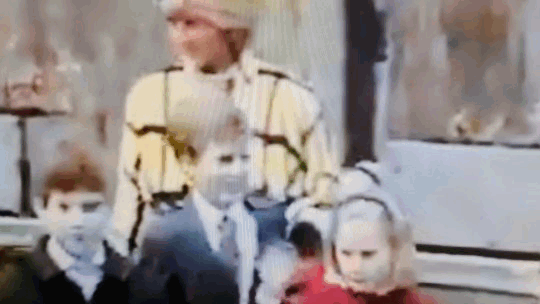
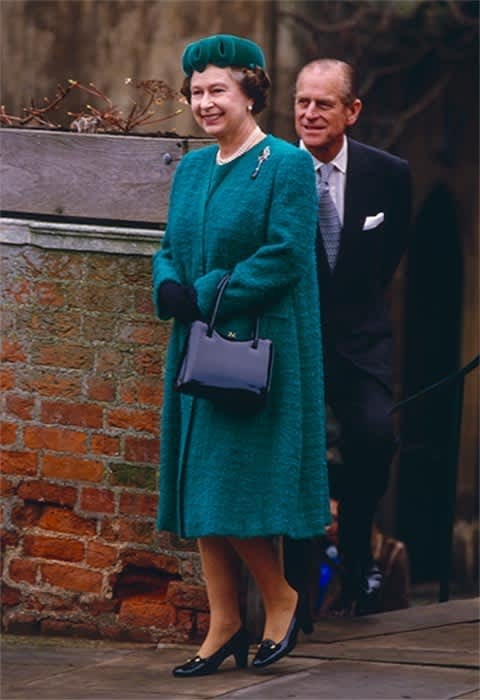
The Queen beamed at the waiting photographers as she exited the church service with the Duke of Edinburgh. Her Majesty wore a teal blue coat and matching hat for the occasion, accessorising with one of her signature Launer bags and patent loafers.
The Queen and the Duke of Edinburgh spent Christmas at Windsor Castle for the first time in over 30 years in 2020 due to the pandemic.
The monarch has traditionally travelled to the Sandringham estate in Norfolk for the festive season since 1988, but when Her Majesty's children and, later, grandchildren were young, they would celebrate in Windsor.
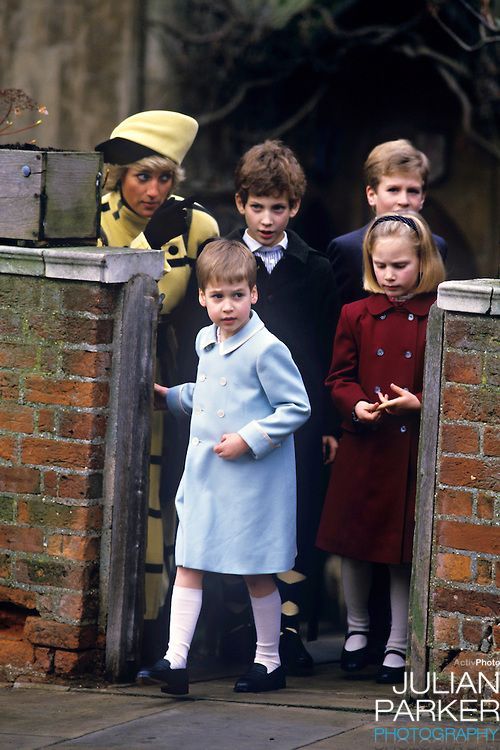
Princess Diana led the youngest royals out of the church service on Christmas morning, including her then five-year-old son Prince William, who was dressed in a long powder blue coat. It was a significant occasion as it was the young Prince's Christmas day debut.
They were joined by Diana's nephews, Lord Frederick Windsor and Peter Phillips, and her niece Zara Phillips. Prince Charles and Diana's youngest son Prince Harry would have only been three at this point and didn't make a public appearance on Christmas Day until the following year in Sandringham.

Diana chatted with the Duke and Duchess of York after the service, who had been married just over a year at that point. The Princess opted for a checked pale yellow Escada coat.

An excited William couldn't stop waving at the waiting media as the royals made their way from the church to Windsor Castle. He walked alongside his older cousins Peter and Zara, then aged ten and six at the time.
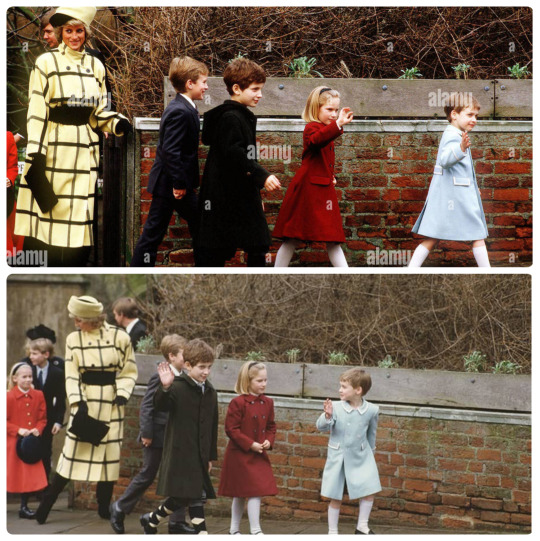
Lord Frederick Windsor, then eight-years-old, joined his cousin, Prince William, in giving the crowds a wave as they left the service at St George's Chapel with Peter and Zara Phillips and Lady Rose Windsor.
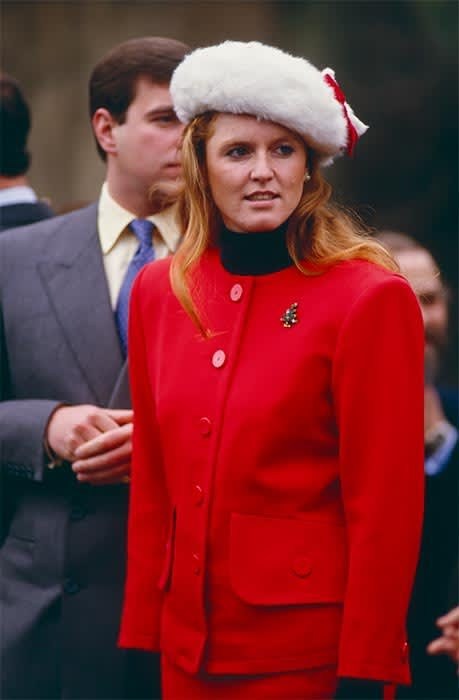
Sarah Ferguson looked festive in a red coat and a white furry hat for the royals' last Christmas at Windsor. In January 1988, she and Prince Andrew announced the news that they were expecting their first child and Princess Beatrice arrived on 8 August.
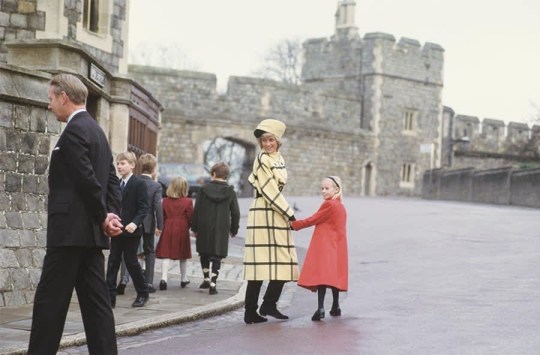
Diana walked hand-in-hand back to Windsor Castle with Lady Rose Windsor, who is the youngest daughter of the Queen's cousin, the Duke of Gloucester and his wife Birgitte.
Lady Rose married George Gilman in 2008 and Kate Middleton was among the guests, attending the ceremony without her boyfriend Prince William, who was away on military operations in the Caribbean.
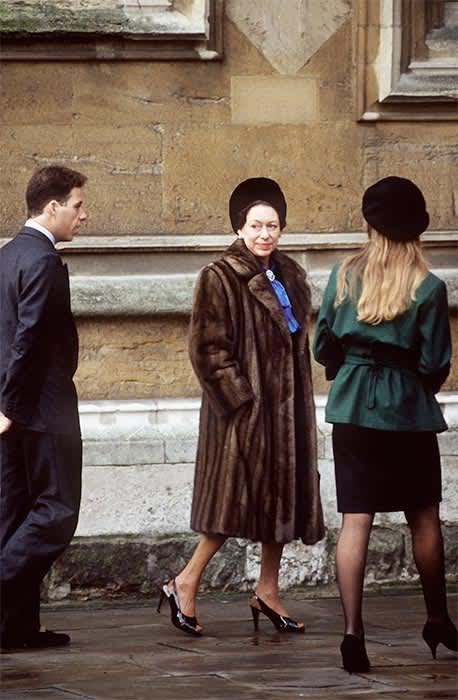
Princess Margaret was among the Queen's relatives at the last Windsor Christmas, attending the service alongside her children David Linley and Lady Sarah Armstrong-Jones.
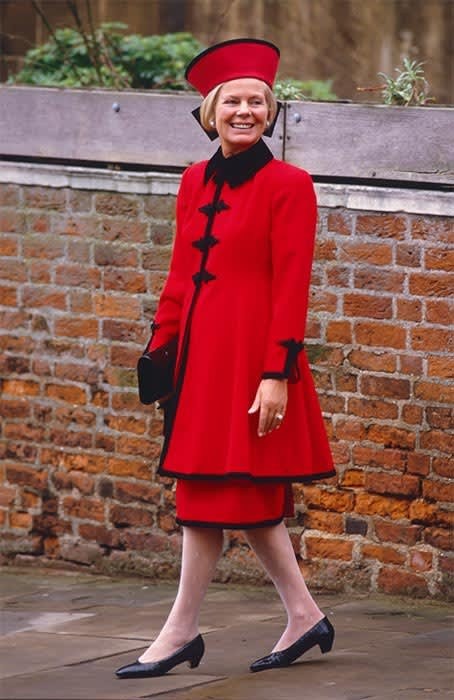
The Duchess of Kent, (born Katharine Worsley), who is married to the Queen's cousin, the Duke of Kent, stood out in a bold red coat at the service.
#royal christmas#Christmas at Windsor#princess Diana#young prince william#windsor castle#Princess Margaret#1987#duchess of kent
45 notes
·
View notes
Text
“At her christening on October 30, she (Princess Margaret) wore the same lace dress that her sister had four years earlier. Gazing at her sister with adoration, Elizabeth whispered, ‘I shall call her Bud. You see she isn’t really a rose yet.’”
Elizabeth & Margaret: The Intimate World of the Windsor Sisters by Andrew Morton
45 notes
·
View notes
Text

Broadcast to the Nation, Aged 14 — Epoch Times
By Chris Summers | 9/8/2022 — Speaking to the hundreds of thousands of children who had been evacuated from UK cities, Elizabeth said: “My sister Margaret Rose and I feel so much for you, as we know from experience what it means to be away from those you love most of all. To you living in new surroundings, we send a message of true sympathy and at the same time, we would like to thank the kind people who have welcomed you to their homes in the country.”
When she was 16, she was given the honorary role of colonel of the Grenadier Guards and inspected the regiment at Windsor Castle. When she turned 18 in April 1944, she joined the British Army’s Auxiliary Territorial Service and had reached the rank of junior commander by the time of Germany’s surrender.
During the war, she also fell in love with a young naval officer, Lt. Philip Mountbatten, who was five years her senior and a distant cousin. He had been born into the Greek royal family—which had be2-13 yoen restored in 1936 but was replaced by a republic in 1973—and was known as Prince Philip of Greece.
[Photo dated July 10, 1947, shows the official photograph of Britain’s Princess Elizabeth and her fiancee, Lt. Philip Mountbatten, in London. - © AP Photo]
4 notes
·
View notes
Text
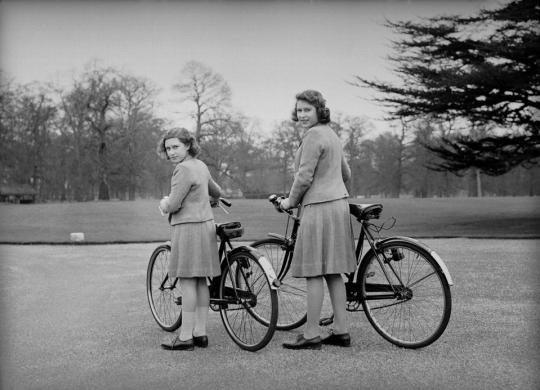
4th April 1942: Princess Margaret Rose (1930 - 2002) and Princess Elizabeth (right, and who later became Queen Elizabeth II) preparing to set out on bicycles in the grounds of the Royal Lodge, Windsor, Berkshire. (Photo by Lisa Sheridan/Studio Lisa/Hulton Archive/Getty Images)
1 note
·
View note
Text
ECOZONE LIFESTYLE PAYS TRIBUTE TO HER MAJESTY QUEEN ELIZABETH II
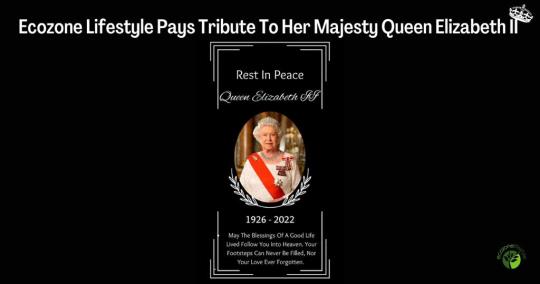
‘08-September-2022’- BALMORAL CASTLE, UNITED KINGDOM
‘’The Queen Died Peacefully At Balmoral This Afternoon.
The King and The Queen Consort Will Remain At Balmoral This Evening and Will Return To London Tomorrow.’’
Ecozone Lifestyle Pays Tribute To Her Majesty Queen Elizabeth II , The entire world was filled with deep sadness when these above words were declared from the Royal Family on 08th September,2022.
CNN-
Britain’s Queen Elizabeth II died Thursday at age 96.
Here’s how the royal family announced her passing in a series of social media posts.
The first announcement came from Buckingham Palace at 6:30 p.m. UK time in a tweet.
It simply read: “The Queen died peacefully at Balmoral this afternoon. The King and The Queen Consort will remain at Balmoral this evening and will return to London tomorrow.”
Her eldest son, Charles, who succeeds her as monarch and will take the name King Charles III, released a statement 30 minutes later with a post on the royal family’s official Twitter account “from His Majesty The King.”
He wrote: “The death of my beloved Mother, Her Majesty The Queen, is a moment of the greatest sadness for me and all members of my family. We mourn profoundly the passing of a cherished Sovereign and a much-loved Mother. I know her loss will be deeply felt throughout the country, the Realms and the Commonwealth, and by countless people around the world.
“During this period of mourning and change, my family and I will be comforted and sustained by our knowledge of the respect and deep affection in which The Queen was so widely held.”
A statement from His Majesty The King!
While Operation London Bridge was the codename for the death of Queen Elizabeth II, it was called Operation Unicorn since she died when she was in Scotland!
Elizabeth II, in full Elizabeth Alexandra Mary, officially Elizabeth II, by the Grace of God, of the United Kingdom of Great Britain and Northern Ireland and of her other realms and territories Queen, Head of the Commonwealth, Defender of the Faith, (born April 21, 1926, London, England — died September 8, 2022, Balmoral Castle, Aberdeenshire, Scotland) Queen of the United Kingdom of Great Britain and Northern Ireland from February 6, 1952 to September 8, 2022.
In 2015 she surpassed Victoria to become the longest-reigning monarch in British history.
Early Life
Queen Elizabeth, King George VI, Princess Margaret, and Princess Elizabeth
Princess Elizabeth
Elizabeth was the elder daughter of Prince Albert, duke of York, and his wife, Lady Elizabeth Bowes-Lyon. As the child of a younger son of King George V, the young Elizabeth had little prospect of acceding to the throne until her uncle, Edward VIII (afterward duke of Windsor), abdicated in her father’s favour on December 11, 1936, at which time her father became King George VI and she became heir presumptive. The princess’s education was supervised by her mother, who entrusted her daughters to a governess, Marion Crawford; the princess was also grounded in history by C.H.K. Marten, afterward provost of Eton College, and had instruction from visiting teachers in music and languages. During World War II she and her sister, Princess Margaret Rose, perforce spent much of their time safely away from the London blitz and separated from their parents, living mostly at Balmoral Castle in Scotland and at the Royal Lodge, Windsor, and Windsor Castle.
Early in 1947 Princess Elizabeth went with the king and queen to South Africa. After her return there was an announcement of her betrothal to her distant cousin Lieutenant Philip Mountbatten of the Royal Navy, formerly Prince Philip of Greece and Denmark. The marriage took place in Westminster Abbey on November 20, 1947. On the eve of the wedding her father, the king, conferred upon the bridegroom the titles of duke of Edinburgh, earl of Merioneth, and Baron Greenwich. They took residence at Clarence House in London. Their first child, Prince Charles (Charles Philip Arthur George), was born November 14, 1948, at Buckingham Palace.
Accession To The Throne
In the summer of 1951 the health of King George VI entered into a serious decline, and Princess Elizabeth represented him at the Trooping the Colour and on various other state occasions. On October 7 she and her husband set out on a highly successful tour of Canada and Washington, D.C. After Christmas in England she and the duke set out in January 1952 for a tour of Australia and New Zealand, but en route, at Sagana, Kenya, news reached them of the king’s death on February 6, 1952. Elizabeth, now queen, at once flew back to England. The first three months of her reign, the period of full mourning for her father, were passed in comparative seclusion. But in the summer, after she had moved from Clarence House to Buckingham Palace, she undertook the routine duties of the sovereign and carried out her first state opening of Parliament on November 4, 1952. Her coronation was held at Westminster Abbey on June 2, 1953.
In June 2022 Britain celebrated Elizabeth’s 70 years on the throne with the “Platinum Jubilee,” a four-day national holiday that included the Trooping the Colour ceremony, a thanksgiving service at St. Paul’s Cathedral, a pop music concert at Buckingham Palace, and a pageant that employed street arts, theatre, music, circus, carnival, and costume to honour the queen’s reign. Health issues limited Elizabeth’s involvement. Concerns about the queen’s health also led to a break in tradition when, in September, she appointed Boris Johnson’s replacement as prime minister, Liz Truss, at Balmoral rather than at Buckingham Palace, where she had formally appointed more than a dozen prime ministers.
Just days later, on September 8, Elizabeth’s death, at age 96, shocked Britain and the world. Prince Charles succeeded her on the throne as King Charles III. Ten days of national commemoration of her life and legacy — long planned as “Operation London Bridge” — followed. Notably, the queen lay in state for a day in St. Giles’ Cathedral in Edinburgh and then for three days in Westminster Hall in London, outside of which mourners stood in a line that stretched for miles, in some cases waiting for more than 24 hours to view Elizabeth’s casket. Her sombre funeral ceremony in Westminster Abbey on September 19 was attended by an estimated 100 heads of foreign governments. Following a procession to Wellington Arch, during which Big Ben tolled, the queen’s casket was borne by hearse to her final resting place in St. George’s Chapel at Windsor Castle.
Elizabeth was known to favour simplicity in court life and was also known to take a serious and informed interest in government business, aside from the traditional and ceremonial duties. Privately, she became a keen horsewoman; she kept racehorses, frequently attended races, and periodically visited the Kentucky stud farms in the United States. Her financial and property holdings made her one of the world’s richest women.
It is a big thing to be a part of the country where such a gem was the ruler. Ecozone Lifestyle Pays Tribute To Her Majesty Queen Elizabeth II!
And, as a tribute to Her Majesty Ecozone Lifestyle Aims Plastic Free Lifestyle By Producing Premium Copper Ware In London in which using natural materials and processes in the crafting process helps in reducing the carbon foot print which further made the manufacturing process in a more environmentally friendly manner as copper is one of the most important advances human has ever made this year as being the seller of the Ecozone Lifestyle Products for Eco-friendly Products In London who has Copper Ware In London like Copper Bottle In London, Matt Copper Bottle In London, Copper Bracelet In London, Copper Ware Bracelet In London, Copper Carafe In London, Copper Glass In London, Copper Jugs In London, Copper Mug In London and so many more products where Ecozone Lifestyle Products Reviews are so immense that found this year’s celebrations so sustainable and Eco-Friendly.
This is the metal which has the power to encourage to the natural pursuit, it helps in making one more optimistic about the ventures like Eco Friendly Copper Bottle In London are the Best Copper Bottle In London and are one of the Pure Copper Bottle In London, not only this to get the Best Copper Ware In London as well as the Premium Copper Ware In London like Pure Copper Glass In London , Pure Copper Carafe In London along with the Best Jugs In London which are the Pure Copper Jugs In London , Pure Copper Mug In London.
Ecozone Lifestyle helps in providing sustainable products for a healthy living by all it’s means. It is also on a mission to eliminate plastic for which it also offers a sense of independence when it come to make the decisions. One may attract money to self, business and in house by just putting it strategically in the environment or just wearing it in hand. But, it is not a stop here, for Best Handicraft In London like Best Decorative Stool In London, Wooden Stool In London which are the Best Wooden Stool In London, Tea Light Holders In London, Handmade Tea Light In London, Napkin Holders In London which are the best Wooden Napkin Holders In London, Copper Gift Sets In London from Ecozone Lifestyle can be bought straight. Also, can search for some fun authentic pieces for personal use like Copper Tongue Cleaner In London, Bamboo Cotton Buds In London, Umbrella In London.
Ecozone Lifestyle Will Put In All The Possible Efforts To Make London, U.K. , A Better and Sustainable Place To Be In As Her Majesty, Has Worked So Hard All Throughout Her Life!
1 note
·
View note
Note
Hello! I am hoping that you can help me out. Can you recommend coffee table, photo books of Princess Margaret? Thank You 💐
Hi Anonymous,
Perhaps our Royal fans can help you out here. *Signal boost* Please reblog with your recommendation(s), or leave a comment. I'll try to get back to Anony.
I'd also say take a look at Town and Country article: Five Books About Princess Margaret If You’re Obsessed With The Crown But they are more biographies.

If you're into more historical books, there's Princess Margaret's Wedding Book Hardcover Book by Neil Ferrier 1960 Coffee Table Book x

Sample the photos here.
There's also a more recent book that our friend over at The Snowdons @the-snowdons has just bought. The Crown in Vogue. It contains some photos of Margaret.
I've seen magazines online specials devoted to her fashion style. [x][x] But these are not books. Let us know how it goes. Hope you'll get some recommendations soon!
-Rosalyn51, co-adm
#princess margaret#the crown#british royal family#countess of snowdon#margaret rose windsor#royal family#brf#books#coffee table books#photo books#thanks for your ask#thecrownnet
10 notes
·
View notes
Text
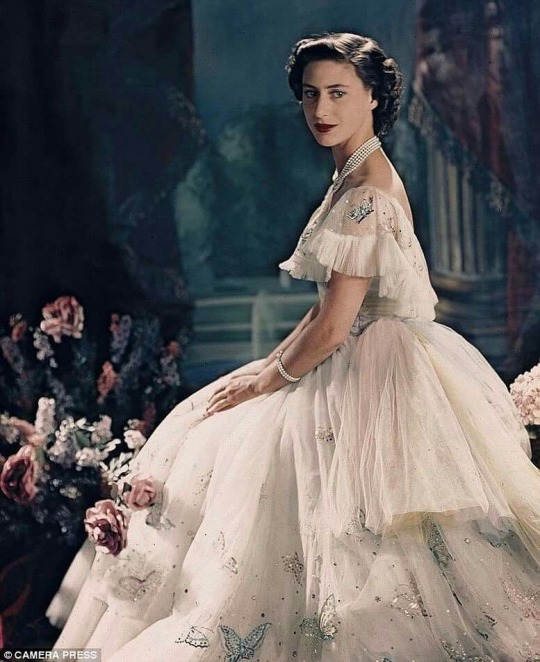
Il vestito che Christian Dior realizzó per la Princess Margaret Rose Windsor, countess of Snowdon
.
.
.
Ph Cecil Beaton
5 notes
·
View notes
Text
on this day in 1945
Royal Horse Show


26th May 1945: Members of the British Monarchy watching an event at the Royal Horse Show in Windsor Home Park, Berkshire. The Duke of Beaufort presenting the Silver Cup to Princess Elizabeth and Margaret Rose for the best Single Turn-Out in the Private Driving class.
60 notes
·
View notes
Text





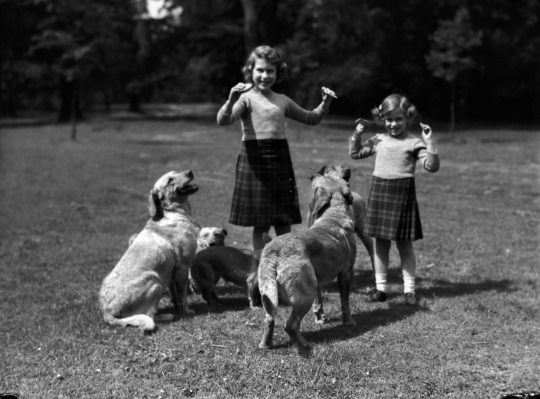
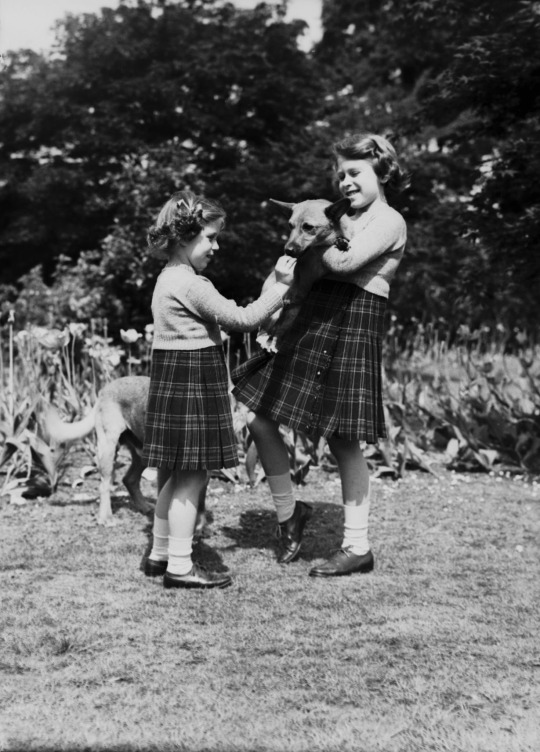
June 1936: King George VI and Queen Elizabeth with Princesses Margaret Rose and Elizabeth in the grounds of Windsor Castle, Berkshire. (Photo by Lisa Sheridan/Studio Lisa/Hulton Archive/Getty Images)
122 notes
·
View notes
Photo
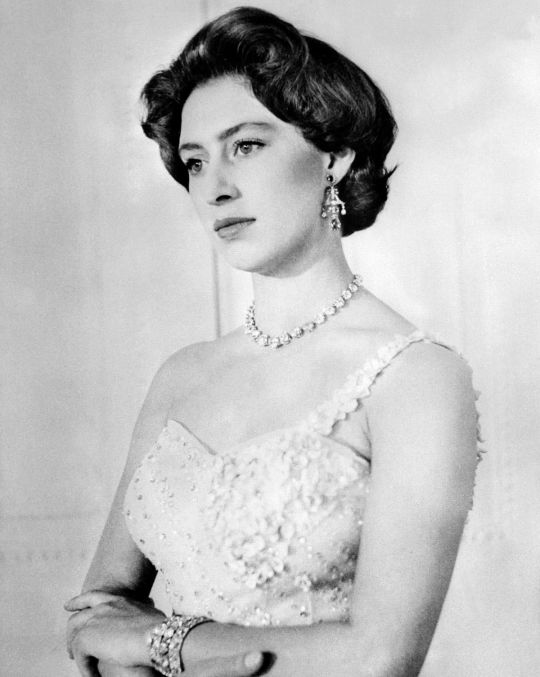
HRH the Princess Margaret, Countess of Snowdon
#countess of snowdon#princess margaret#margaret rose#europe#united kingdom#brf#british royal family#windsor#snowdon
183 notes
·
View notes
Photo
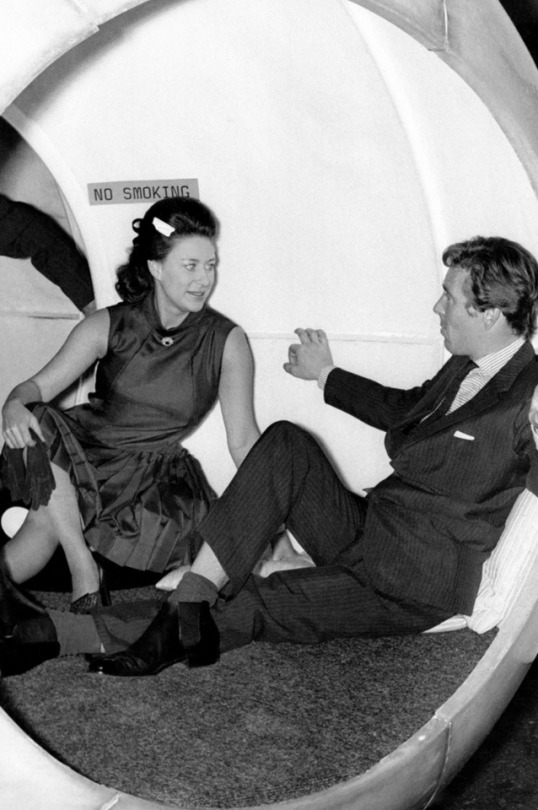
Princess Margaret and husband Antony Armstrong-Jones at a cybernetic exhibition in London, 1968
#princess margaret#antony armstrong jones#lord snowdon#the crown#queen elizabeth ii#house of windsor#countess of snowdon#the royal rebel#margaret rose#history#fashion photography#black and white photography#cybernetic#1960s#kensington palace#london#mine
7 notes
·
View notes